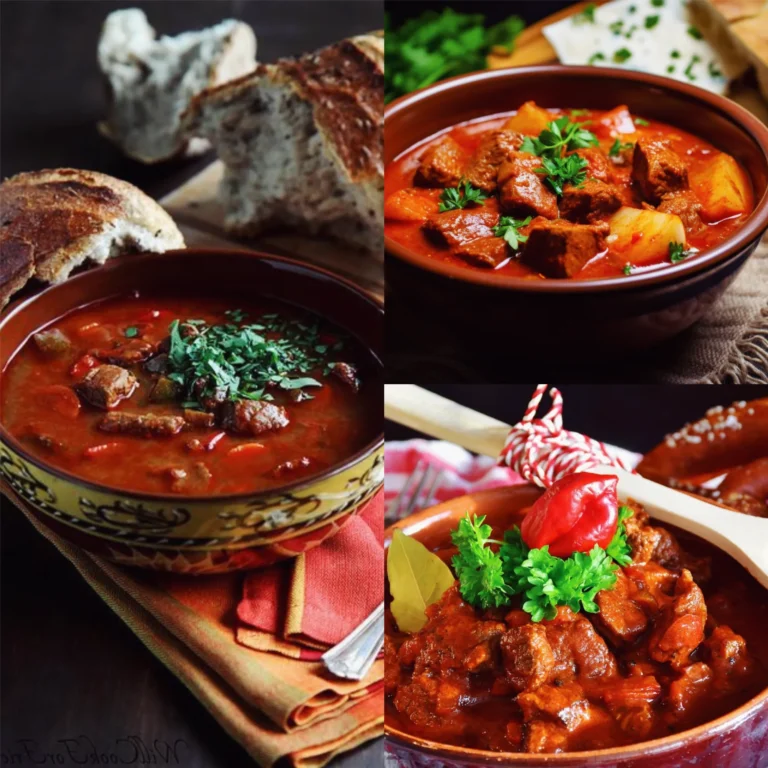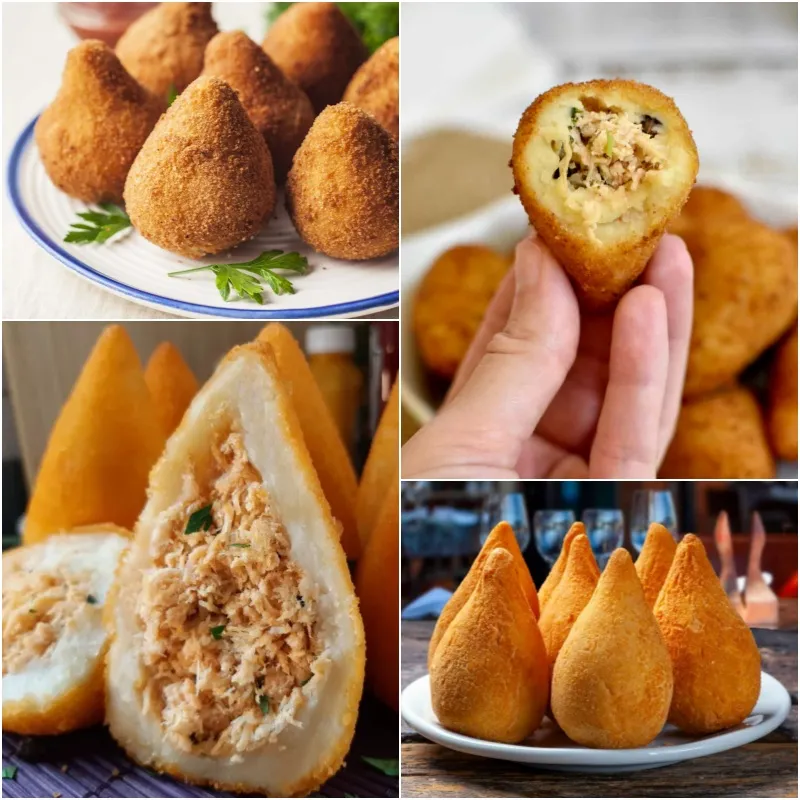
Coxinha: From Traditional Dish to Modern Delight
Coxinha was originally made from any part of the chicken, and its traditional shape was designed to resemble a chicken drumstick. This dish may have originated in the 19th century in Limeira, Brazil, where it became a popular food due to its unique preparation.
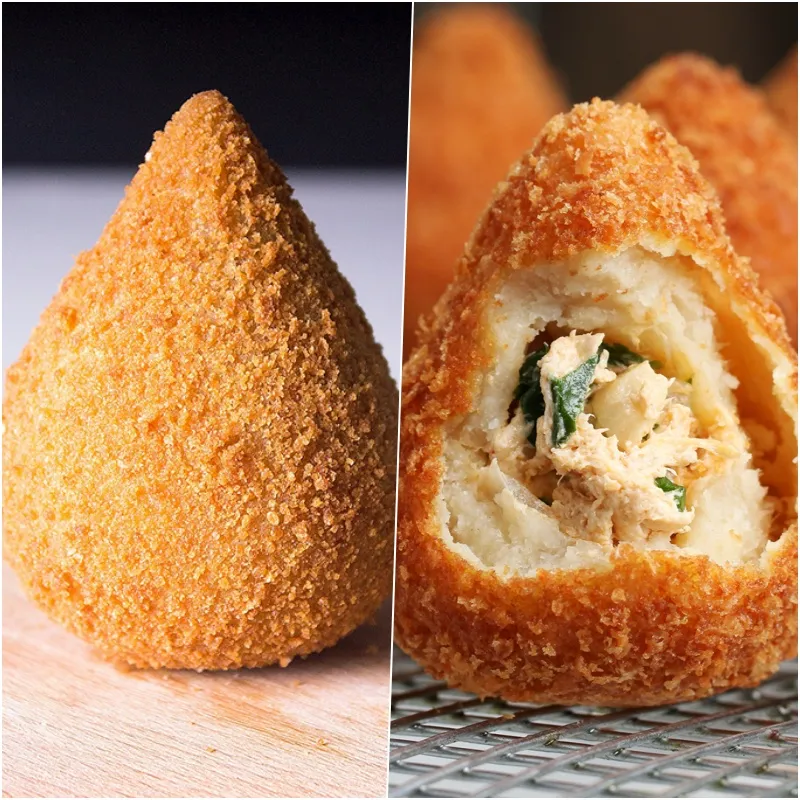
In the book Stories & Recipes, Nadir Cavazin recounts that the son of Princess Isabel, of the Brazilian Empire (1846–1921), and Prince Gaston, Count of Eu, was a reclusive child due to mental health issues. His favorite food was chicken, but he would only eat the drumsticks. One day, when there weren’t enough drumsticks, the cook ingeniously decided to turn the entire chicken into a drumstick. He shredded the meat and used it as a filling for dough shaped like a drumstick. The child loved the dish, and when Empress Teresa Cristina visited, she was so taken by it that she requested the royal kitchen to learn how to prepare the snack.
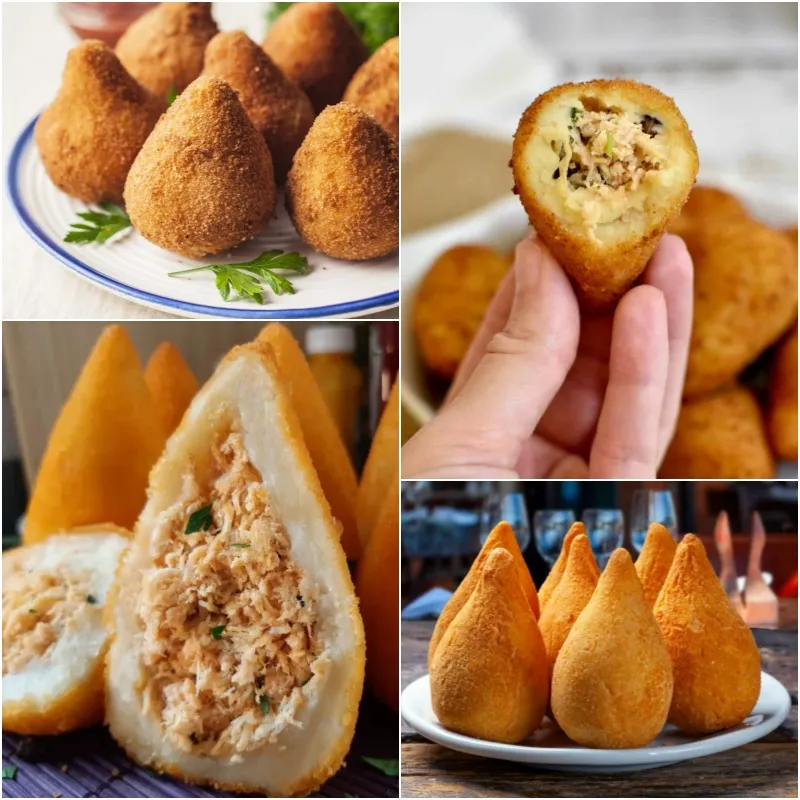
Coxinha is made from dough consisting of wheat flour, chicken broth, and sometimes mashed potatoes. The filling is shredded, well-seasoned chicken, or even a whole chicken drumstick. It can also include catupiry or requeijão cheese, onions, parsley, scallions, and occasionally tomato sauce or turmeric. After shaping, the coxinha is dipped in batter, rolled in breadcrumbs or cassava flour, and then deep-fried.
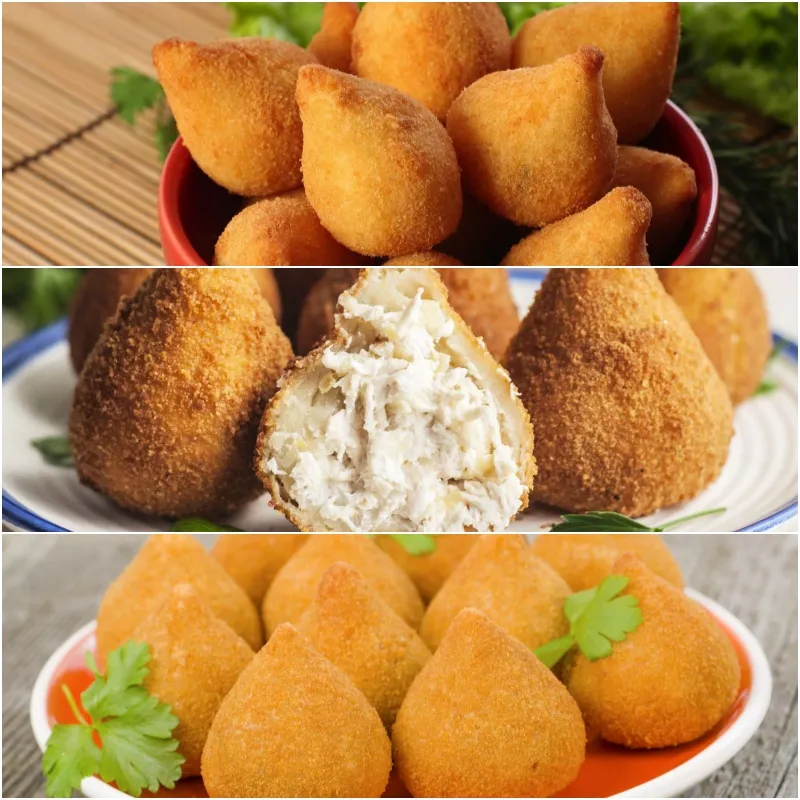
Today, many variations of the original coxinha have become popular. For instance, Coxinha Mineira is filled with corn, a traditional ingredient in the cuisine of Minas Gerais. Cheese-filled coxinha is also very common in snack shops. In Curitiba, coxinha filled with cheddar cheese and Araucaria nuts can be found at local restaurants. To mark the presence of cheese, a toothpick is often used instead of the chicken bone found in traditional coxinha.
With its many variations and irresistible flavors, coxinha has become a staple in Brazilian cuisine.
